判决
Razr 50 凭借大尺寸外置显示屏实现了真正的飞跃,而 Razr 60 只是向前迈出了一小步:功率稍大、电池容量稍大、续航时间稍长、屏幕稍亮、Wi-Fi 速度稍快。
因此,您没有理由不选择前代产品。当然,除非你真的想要新的颜色款式,而这些颜色款式实际上非常漂亮。
令人欣慰的是,在通货膨胀令人担忧的时候,摩托罗拉将其廉价翻盖手机的价格降低了 100 欧元(约合 115 美元)。不过,四年的安全和系统更新只能算一般。
就其本身而言,摩托罗拉 Razr 60 仍然是一款与众不同的智能手机,会让设计爱好者和摄影发烧友欣喜不已:由于采用了铰链和外置显示屏,您还可以用主摄像头自拍,或在没有三脚架的情况下安装手机。
不过,其他翻盖手机通常功能更强大,摄像头也略胜一筹。考虑到相对较低的价格,Razr 60 还是值得推荐给那些热衷于这一概念而又不想花太多钱的人。
Pros
Cons
价格和供应情况
该制造商在其网上商店为其智能手机标价 799 欧元(约合 921 美元)。
不过,alza.de 等其他零售商已经为这款手机提供了 100 欧元(约合 115 美元)的折扣。
规格
外壳和功能 - 仍然稳定
随着 Razr 60 的推出,摩托罗拉对其相对廉价的翻盖手机进行了升级。您可以将它的短边打开,除了已经很大的外显示屏外,还可以获得一个巨大的内显示屏。乍一看,很难将它与前代产品区分开来,因为在外观、尺寸和重量方面没有任何变化。
但等等--事实并非如此,因为如果你知道去年有哪些颜色和材质可供选择,摩托罗拉 2025 将推出全新的变体:例如,深蓝色的直布罗陀海(Gibraltar Sea)采用尼龙背壳,浅米色的最亮天空(Lightest Sky)采用醋酸纤维表面处理,或者像我们的测试设备一样,采用浅绿色的春芽(Spring Bud)皮革外观。所有颜色均选自潘通调色板。
摩托罗拉 Razr 60 再次为设计迷们带来了一场盛宴,如果需要,它还能将色彩带入日常生活。钛合金加固铰链和主显示屏上几乎看不出的不易察觉的折痕,让这款手机在很多情况下都能轻松使用。做工看似结实,但扭动时机身会悄无声息地发出吱吱声。
得益于 IP48 防护等级,这款手机还可以带入浅水中。
8 GB 内存和 256 GB 大容量存储是唯一可用的内存配置。由于支持 nano 和 eSIM 卡,因此还可以双卡双待。
» Notebookcheck多媒体笔记本电脑Top 10排名
» Notebookcheck游戏笔记本电脑Top 10排名
» Notebookcheck低价办公/商务笔记本电脑Top 10排名
» Notebookcheck高端办公/商务笔记本电脑Top 10排名
» Notebookcheck工作站笔记本电脑Top 10排名
» Notebookcheck亚笔记本电脑Top 10排名
» Notebookcheck超级本产品Top 10排名
» Notebookcheck变形本产品Top 10排名
» Notebookcheck平板电脑Top 10排名
» Notebookcheck智能手机Top 10排名
» Notebookcheck评测过最出色的笔记本电脑屏幕
» Notebookcheck售价500欧元以下笔记本电脑Top 10排名
» Notebookcheck售价300欧元以下笔记本电脑Top 10排名
通信和操作 - WiFi 6E 和快速触摸屏
Razr 60 还搭载了 WiFi 6E,从而支持无线局域网中很少使用的 6 GHz 网络。这使得手机可以达到约 700-1000 MBit/s 的速度。
LTE 和 5G 的频率非常多,因此这款手机也非常适合经常出差的人使用。
由于采用了 300 Hz 采样率,内侧显示屏上的触摸输入可以顺利捕捉到;外侧显示屏也采用了 120 Hz 采样率,反应速度很快,但有时不够精确。
指纹传感器集成在右侧的待机键上,解锁非常快速可靠。面部识别解锁可通过手机内部和外部的摄像头实现。
| Networking | |
| Motorola Razr 60 | |
| iperf3 transmit AXE11000 6GHz | |
| iperf3 receive AXE11000 6GHz | |
| Motorola Razr 50 | |
| iperf3 transmit AXE11000 6GHz | |
| iperf3 receive AXE11000 6GHz | |
| Samsung Galaxy Z Flip6 5G | |
| iperf3 transmit AXE11000 | |
| iperf3 receive AXE11000 | |
| iperf3 transmit AXE11000 6GHz | |
| iperf3 receive AXE11000 6GHz | |
| Xiaomi Mix Flip | |
| iperf3 transmit AXE11000 | |
| iperf3 receive AXE11000 | |
| Honor Magic V Flip | |
| iperf3 transmit AXE11000 | |
| iperf3 receive AXE11000 | |
| Average Wi-Fi 6E | |
| iperf3 transmit AXE11000 | |
| iperf3 receive AXE11000 | |
| iperf3 transmit AXE11000 6GHz | |
| iperf3 receive AXE11000 6GHz | |
| Average of class Smartphone | |
| iperf3 transmit AXE11000 | |
| iperf3 receive AXE11000 | |
| iperf3 transmit AXE11000 6GHz | |
| iperf3 receive AXE11000 6GHz | |
软件和可持续性 - 摩托罗拉,4 年更新一次
Android 系统预装了 15 个应用程序,制造商的特定更改会外包给应用程序,以便更轻松地进行更新。系统中还有许多人工智能功能,例如根据要求汇总通知或创建和改进图像。
手机的更新将持续到 2029 年 6 月,即四年。三星在这方面提供 7 年的服务,因此仍然处于不败之地。
包装只用一种颜色印刷,不使用任何塑料。我们无法找到任何有关该设备二氧化碳排放量的信息。
摄像头 - 与前代产品相比几乎没有任何变化
Image comparison
Choose a scene and navigate within the first image. One click changes the position on touchscreens. One click on the zoomed-in image opens the original in a new window. The first image shows the scaled photograph of the test device.
Main camera PlantMain camera EnvironmentMain camera Low LightWide-angle camera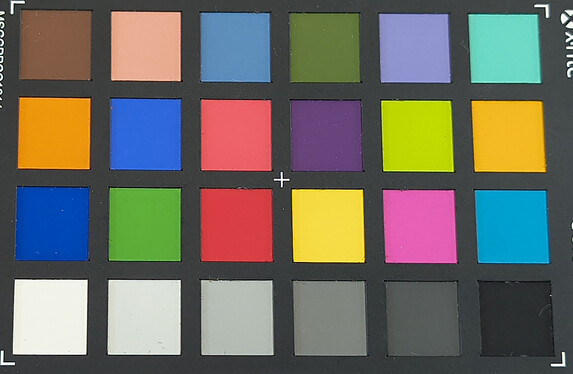
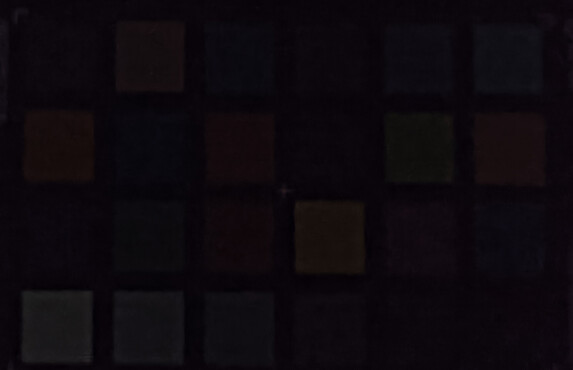
显示屏 - 稍微明亮,但速度较慢
| |||||||||||||||||||||||||
Brightness Distribution: 94 %
Center on Battery: 1185 cd/m²
Contrast: ∞:1 (Black: 0 cd/m²)
ΔE ColorChecker Calman: 1.31 | ∀{0.5-29.43 Ø4.78}
ΔE Greyscale Calman: 1.5 | ∀{0.09-98 Ø5}
99.6% sRGB (Calman 2D)
Gamma: 2.133
CCT: 6382 K
| Motorola Razr 60 P-OLED, 2640x1080, 6.9" | Motorola Razr 50 P-OLED, 2640x1080, 6.9" | Samsung Galaxy Z Flip6 5G Dynamic AMOLED 2X, 2640x1080, 6.7" | Xiaomi Mix Flip AMOLED, 2912x1224, 6.9" | Honor Magic V Flip OLED, 2520x1080, 6.8" | |
|---|---|---|---|---|---|
| Screen | -7% | -49% | -77% | 8% | |
| Brightness middle (cd/m²) | 1185 | 1116 -6% | 1210 2% | 949 -20% | 1529 29% |
| Brightness (cd/m²) | 1178 | 1122 -5% | 1221 4% | 949 -19% | 1535 30% |
| Brightness Distribution (%) | 94 | 97 3% | 98 4% | 98 4% | 97 3% |
| Black Level * (cd/m²) | |||||
| Colorchecker dE 2000 * | 1.31 | 1.02 22% | 3.1 -137% | 2.1 -60% | 1.3 1% |
| Colorchecker dE 2000 max. * | 1.78 | 2.54 -43% | 4.2 -136% | 5.6 -215% | 2.1 -18% |
| Greyscale dE 2000 * | 1.5 | 1.7 -13% | 2 -33% | 3.8 -153% | 1.5 -0% |
| Gamma | 2.133 103% | 2.123 104% | 2.05 107% | 2.25 98% | 2.22 99% |
| CCT | 6382 102% | 6510 100% | 6666 98% | 6826 95% | 6303 103% |
* ... smaller is better
Screen Flickering / PWM (Pulse-Width Modulation)
| Screen flickering / PWM detected | 764.3 Hz Amplitude: 74 % | ||
The display backlight flickers at 764.3 Hz (worst case, e.g., utilizing PWM) . The frequency of 764.3 Hz is quite high, so most users sensitive to PWM should not notice any flickering. In comparison: 53 % of all tested devices do not use PWM to dim the display. If PWM was detected, an average of 8118 (minimum: 5 - maximum: 343500) Hz was measured. | |||
固定缩放级别和不同亮度设置下的测量系列(最低亮度下的振幅曲线看起来很平,但这是缩放造成的。信息框显示的是最小亮度下的振幅放大图)
Display Response Times
| ↔ Response Time Black to White | ||
|---|---|---|
| 1.9 ms ... rise ↗ and fall ↘ combined | ↗ 0.9 ms rise | |
| ↘ 1 ms fall | ||
| The screen shows very fast response rates in our tests and should be very well suited for fast-paced gaming. In comparison, all tested devices range from 0.1 (minimum) to 240 (maximum) ms. » 9 % of all devices are better. This means that the measured response time is better than the average of all tested devices (20.2 ms). | ||
| ↔ Response Time 50% Grey to 80% Grey | ||
| 12.8 ms ... rise ↗ and fall ↘ combined | ↗ 0.9 ms rise | |
| ↘ 11.9 ms fall | ||
| The screen shows good response rates in our tests, but may be too slow for competitive gamers. In comparison, all tested devices range from 0.165 (minimum) to 636 (maximum) ms. » 25 % of all devices are better. This means that the measured response time is better than the average of all tested devices (31.6 ms). | ||
性能、排放和电池续航时间--足够快速,适合日常使用
使用 联发科 Dimensity 7400XSoC 技术,Razr 60 的功率比前代产品略高,但在日常使用中几乎看不出差别。与更昂贵的翻盖手机相比,其性能明显较低,但通常也足以保证流畅运行。
长时间加载后会有明显的发热现象,但这并不严重。同时,在压力测试中,SoC 性能几乎没有明显下降。
在声音播放时,扬声器由听筒提供支持。二重奏音量不大,但听起来相当不错。此外,还有许多无线音频编解码器可用于连接耳机或扬声器。
由于采用了更大功率的电池,电池续航时间比上一代产品略长。不过,其他翻盖手机的续航时间要比我们在 Wi-Fi 测试中用 Razr 60 测得的 13:34 小时长很多。
| Geekbench AI | |
| Single Precision NPU 1.5 | |
| Average of class Smartphone (80 - 5210, n=55, last 2 years) | |
| Motorola Razr 60 | |
| Average MediaTek Dimensity 7400X (569 - 575, n=3) | |
| Half Precision NPU 1.5 | |
| Average of class Smartphone (80 - 36297, n=55, last 2 years) | |
| Motorola Razr 60 | |
| Average MediaTek Dimensity 7400X (1311 - 1389, n=3) | |
| Quantized NPU 1.5 | |
| Average of class Smartphone (133 - 49889, n=55, last 2 years) | |
| Motorola Razr 60 | |
| Average MediaTek Dimensity 7400X (2689 - 2852, n=3) | |
| Motorola Razr 60 | Motorola Razr 50 | Samsung Galaxy Z Flip6 5G | Xiaomi Mix Flip | Honor Magic V Flip | Average 256 GB UFS 2.2 Flash | Average of class Smartphone | |
|---|---|---|---|---|---|---|---|
| AndroBench 3-5 | -2% | 127% | 177% | 46% | -15% | 62% | |
| Sequential Read 256KB (MB/s) | 1020.1 | 989.1 -3% | 3930.68 285% | 4063.4 298% | 1947.4 91% | 903 ? -11% | 2223 ? 118% |
| Sequential Write 256KB (MB/s) | 918.4 | 837.3 -9% | 2603.84 184% | 3332.67 263% | 1672.06 82% | 727 ? -21% | 1838 ? 100% |
| Random Read 4KB (MB/s) | 266.2 | 284.4 7% | 445.5 67% | 367.24 38% | 277.55 4% | 226 ? -15% | 295 ? 11% |
| Random Write 4KB (MB/s) | 282.9 | 276.8 -2% | 202.97 -28% | 587.21 108% | 297.97 5% | 247 ? -13% | 335 ? 18% |
(-) The maximum temperature on the upper side is 45.1 °C / 113 F, compared to the average of 35.2 °C / 95 F, ranging from 21.9 to 247 °C for the class Smartphone.
(±) The bottom heats up to a maximum of 41.3 °C / 106 F, compared to the average of 34 °C / 93 F
(+) In idle usage, the average temperature for the upper side is 26.5 °C / 80 F, compared to the device average of 32.9 °C / 91 F.
3DMark Steel Nomad Stress Test
| 3DMark | |
| Wild Life Stress Test Stability | |
| Motorola Razr 50 | |
| Motorola Razr 60 | |
| Honor Magic V Flip | |
| Xiaomi Mix Flip | |
| Samsung Galaxy Z Flip6 5G | |
| Wild Life Extreme Stress Test | |
| Motorola Razr 50 | |
| Motorola Razr 60 | |
| Xiaomi Mix Flip | |
| Honor Magic V Flip | |
| Samsung Galaxy Z Flip6 5G | |
Motorola Razr 60 audio analysis
(+) | speakers can play relatively loud (85.8 dB)
Bass 100 - 315 Hz
(-) | nearly no bass - on average 21.5% lower than median
(±) | linearity of bass is average (11.8% delta to prev. frequency)
Mids 400 - 2000 Hz
(+) | balanced mids - only 3.9% away from median
(+) | mids are linear (5.2% delta to prev. frequency)
Highs 2 - 16 kHz
(±) | higher highs - on average 6.6% higher than median
(+) | highs are linear (5.4% delta to prev. frequency)
Overall 100 - 16.000 Hz
(±) | linearity of overall sound is average (20.5% difference to median)
Compared to same class
» 35% of all tested devices in this class were better, 9% similar, 56% worse
» The best had a delta of 11%, average was 35%, worst was 134%
Compared to all devices tested
» 53% of all tested devices were better, 8% similar, 39% worse
» The best had a delta of 4%, average was 24%, worst was 134%
Samsung Galaxy Z Flip6 5G audio analysis
(+) | speakers can play relatively loud (90.8 dB)
Bass 100 - 315 Hz
(-) | nearly no bass - on average 24.7% lower than median
(±) | linearity of bass is average (7.5% delta to prev. frequency)
Mids 400 - 2000 Hz
(±) | reduced mids - on average 5.3% lower than median
(+) | mids are linear (5.3% delta to prev. frequency)
Highs 2 - 16 kHz
(+) | balanced highs - only 4.2% away from median
(+) | highs are linear (3.5% delta to prev. frequency)
Overall 100 - 16.000 Hz
(±) | linearity of overall sound is average (17.4% difference to median)
Compared to same class
» 12% of all tested devices in this class were better, 8% similar, 80% worse
» The best had a delta of 11%, average was 35%, worst was 134%
Compared to all devices tested
» 32% of all tested devices were better, 8% similar, 60% worse
» The best had a delta of 4%, average was 24%, worst was 134%
| Motorola Razr 60 4500 mAh | Motorola Razr 50 4200 mAh | Samsung Galaxy Z Flip6 5G 4000 mAh | Xiaomi Mix Flip 4780 mAh | Honor Magic V Flip 4800 mAh | |
|---|---|---|---|---|---|
| Battery runtime | -5% | 14% | 10% | 42% | |
| WiFi v1.3 (h) | 13.6 | 12.9 -5% | 15.5 14% | 14.9 10% | 19.3 42% |
| Reader / Idle (h) | 24.6 | 33.3 | 31 | ||
| H.264 (h) | 16.6 | 19.1 | 22.9 | ||
| Load (h) | 4.8 | 4.1 | 4.5 |
Notebookcheck 总体评分
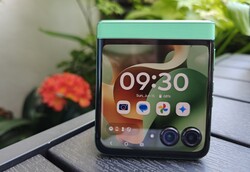
Razr 60 价格相对便宜,因此在翻盖手机中具有特殊地位。
与此同时,它与前代产品相比几乎没有什么变化,这就为购买 Razr 50以合理的价格购买。
Motorola Razr 60
- 06/15/2025 v8
Florian Schmitt
可比较的替代品
Transparency
The selection of devices to be reviewed is made by our editorial team. The test sample was provided to the author as a loan by the manufacturer or retailer for the purpose of this review. The lender had no influence on this review, nor did the manufacturer receive a copy of this review before publication. There was no obligation to publish this review. As an independent media company, Notebookcheck is not subjected to the authority of manufacturers, retailers or publishers.
This is how Notebookcheck is testing
Every year, Notebookcheck independently reviews hundreds of laptops and smartphones using standardized procedures to ensure that all results are comparable. We have continuously developed our test methods for around 20 years and set industry standards in the process. In our test labs, high-quality measuring equipment is utilized by experienced technicians and editors. These tests involve a multi-stage validation process. Our complex rating system is based on hundreds of well-founded measurements and benchmarks, which maintains objectivity. Further information on our test methods can be found here.




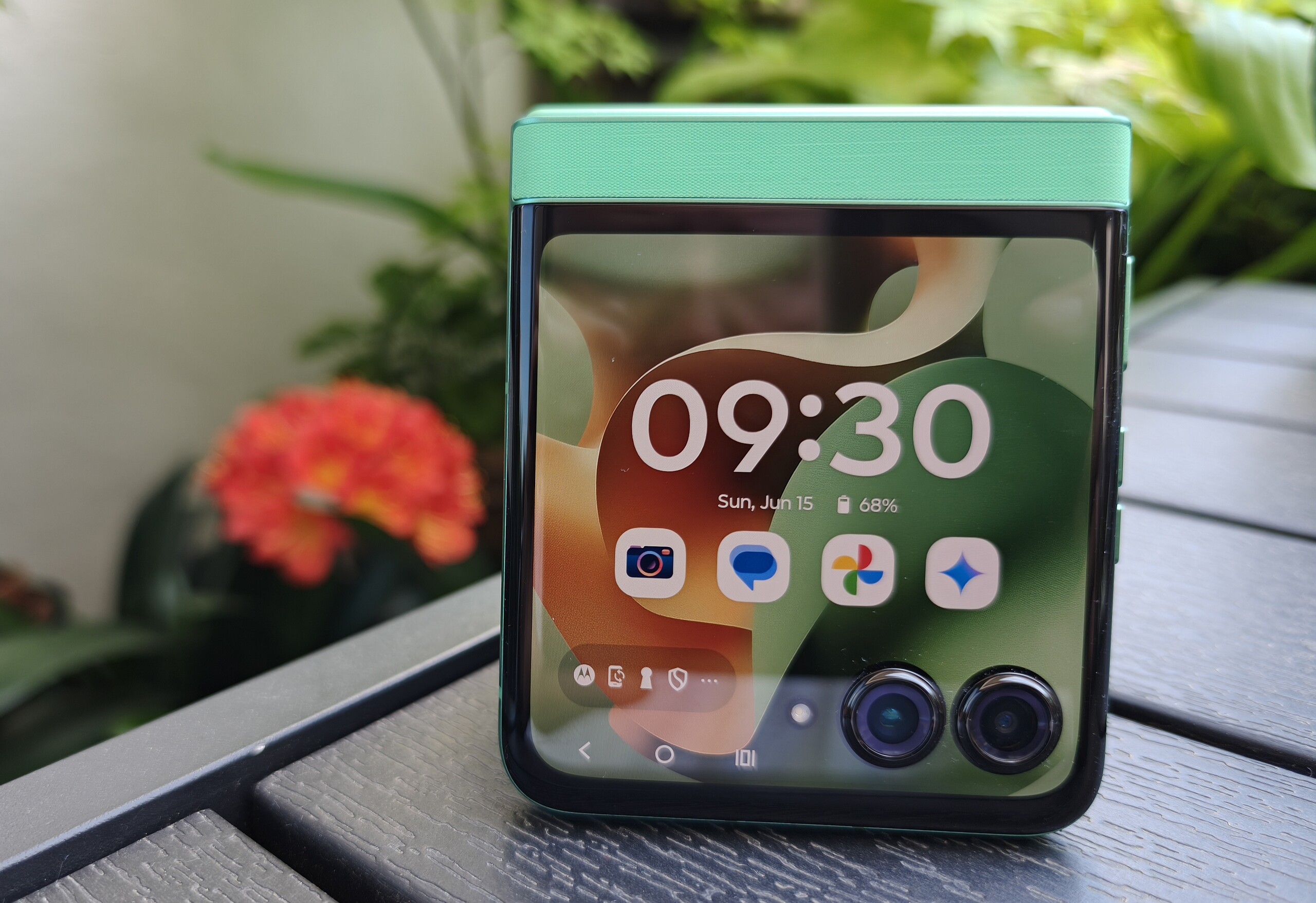











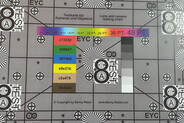
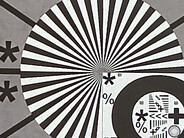
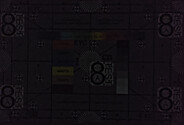

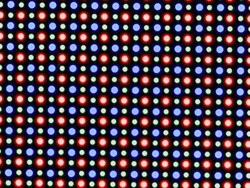
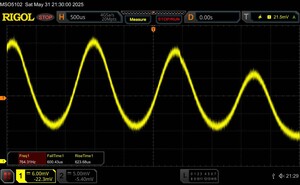





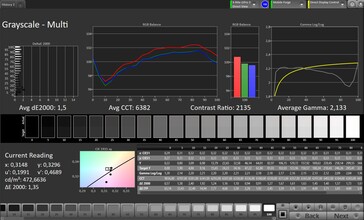
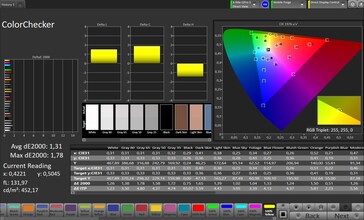
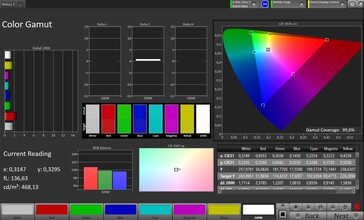
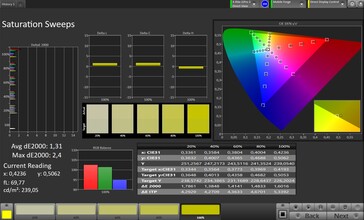
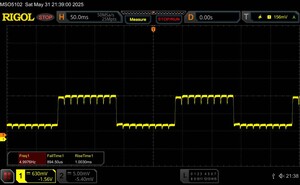
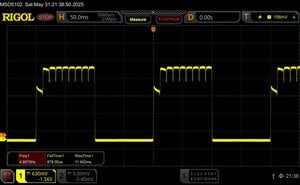

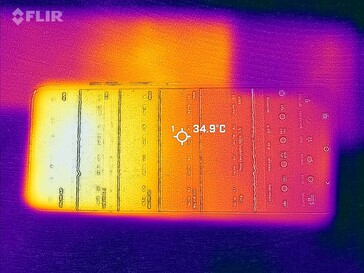
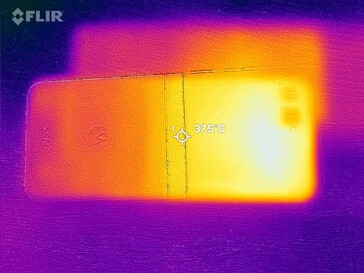
 Total Sustainability Score:
Total Sustainability Score: 